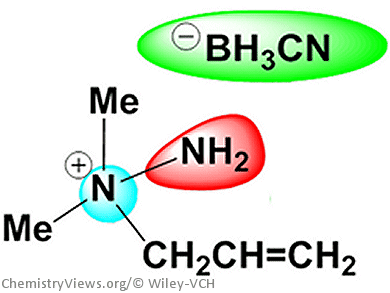Propellants represent an important class of functional materials in material science. In a space propulsion system, propellants are used to produce a gas that can be directed through a nozzle, thereby producing thrust. Traditional propellant fuels, such as hydrazine and hydrazine derivatives, are extremely toxic, highly volatile, very sensitive to adiabatic compression (risk of detonation), and difficult to handle, which increases the handling and storage costs. This has resulted in a search for alternative propellant fuels that are environmentally benign while exhibiting properties and performances comparable to hydrazine derivatives.
Qinghua Zhang, Jean’ne M. Shreeve, and co-workers, China Academy of Engineering Physics (CAEP), Beijing, and University of Idaho, Moscow, USA, have tackled this problem by designing and synthesizing a family of cyanoborohydride-based ionic liquids (ILs) composed of a reducer anion, e.g., cyanoborohydride, and different cations, e.g., N,N-dimethylhydrazinium, imidazolium, boronium, with properties and propellant performances comparable to hydrazine derivatives. These new ILs as bipropellant fuels have some unique advantages including negligible vapor pressure, ultra-short ignition delay time, and reduced synthetic and storage costs, giving them great application potential as environmentally friendly fuels in bipropellant formulations.
- Cyanoborohydride-Based Ionic Liquids as Green Aerospace Bipropellant Fuels,
Qinghua Zhang, Ping Yin, Jiaheng Zhang, Jean’ne M. Shreeve,
Chem. Eur. J. 2014,
DOI: 10.1002/chem.201402704



